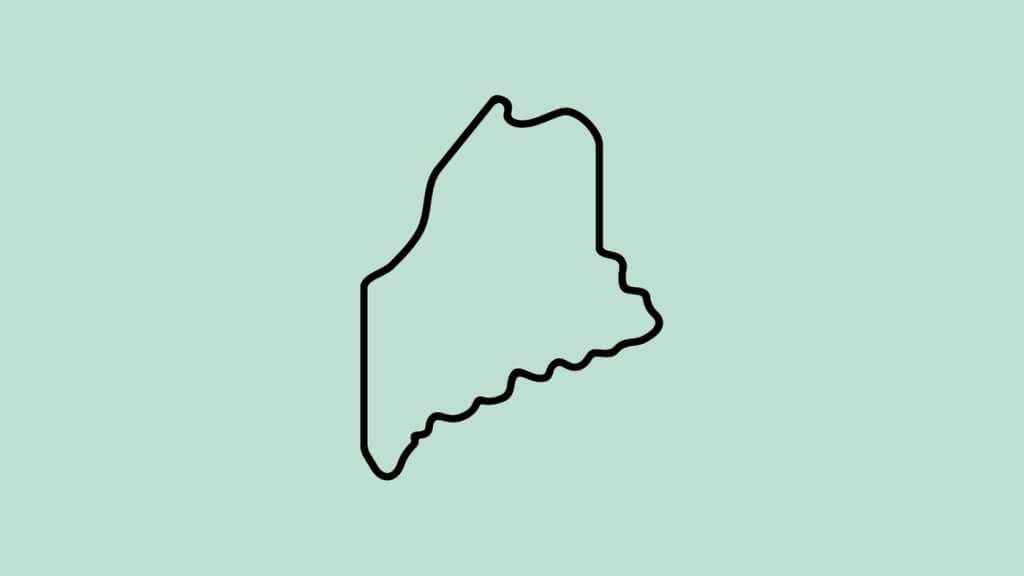Maine has hundreds of edible mushrooms, including chanterelles, puffballs, oysters, porcinis, and more. While all of New England is popular with foragers, Maine is especially bountiful, thanks to its inland forests full of oaks and hardwoods.
A List of Common Edible Wild Mushrooms in Maine
1. Smooth Chanterelle (Cantharellus Species) and Black Trumpet (Craterellus Species)
Highly sought-after chanterelle mushrooms range in color from yellow to red to black. They are vase-shaped and have ridges, not gills, on the underside of the cap.
When to forage for chanterelles and black trumpets?
Look for chanterelles and black trumpets from July to September.
Chanterelles thrive in warm and moist weather conditions. Black trumpets thrive in damp conditions, so after rainfall is an optimal time to forage.
What Are You Foraging For Right Now?
We're thrilled to hear your ideas. What would you like to submit today? Feel free to share your thoughts and experiences with us.
Where to find them?
Because they form a mycorrhizal relationship with the roots of trees, they are found in hardwood forests, especially around oaks. They prefer moist, organic soil and shade. The best time to find them is in September and October.
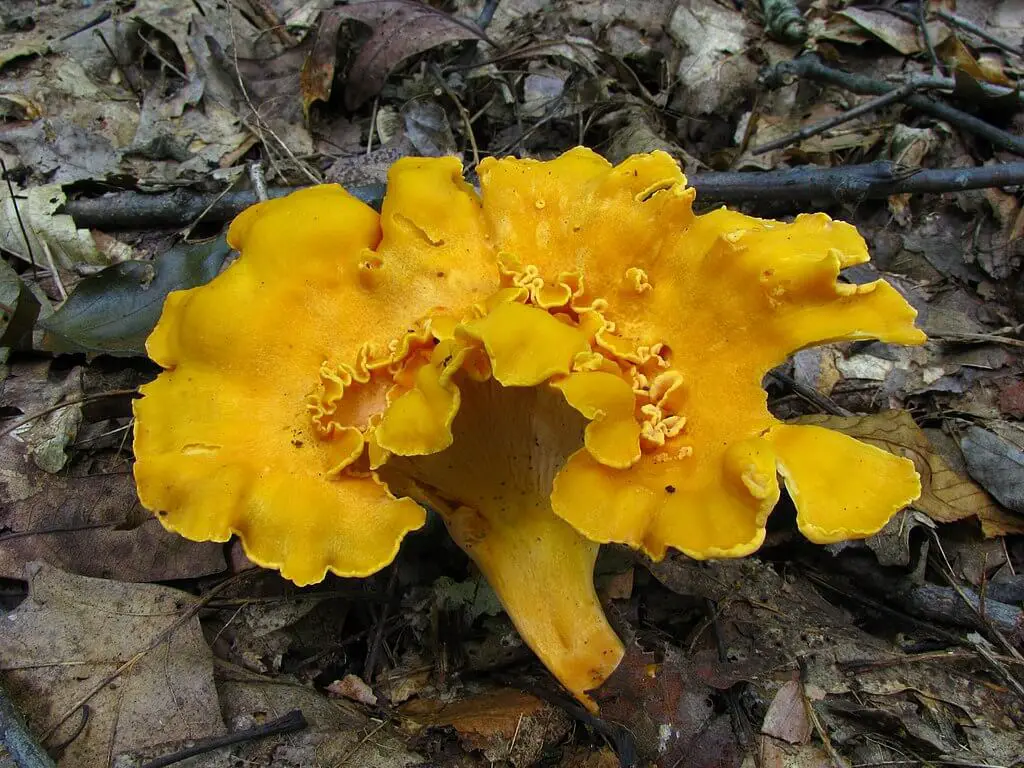

Flavor
The smooth, orange chanterelle has an apricot scent and fruity flavor with slight notes of pepper.
The black trumpet has a less intense fruity scent and tastes earthy and smokey, with a hint of fruitiness.
Cooking tips
You can use chanterelles to make cream sauce, pasta, soup, and more. Chanterelles have a delicate flavor that shines when sautéed. Heat butter or olive oil in a pan, add the chanterelles, and cook until they release their moisture and become golden brown.
Black trumpets have a strong flavor that intensifies when dried. Consider drying them for later use in soups, stews, or sauces.
I recommend the following recipes:
- Creamy chanterelle soup
- Chanterelles on toast
- Black trumpet mushroom sauce with cream and black tarragon
Watch our video on when and where to look for chanterelles.
2. Puffball (Lycoperdon and Calvatia Species)
Maine has multiple puffball species. They are typically white and round and do not have gills. They vary from less than one inch wide to 59 inches wide.
When to forage for puffballs?
Look for puffballs from late August to October. After periods of rain, when the weather is still relatively warm, is an excellent time to search for them.
Where to find them?
Puffballs often grow in open areas with grass. Explore meadows, fields, and clearings, especially if they are surrounded by trees. They may be found near trees such as oaks, birches, and pines.

Flavor
These mushrooms are edible before they develop spores, while the inside is still white. They have a mild scent and an earthy flavor with a firm, spongy texture.
Cooking tips
This species quickly absorbs the flavor of a dish. You can use them in many recipes, including burgers, lasagna, and hummus.
Enhance their taste by combining them with herbs like thyme, rosemary, or parsley. You can also add garlic, lemon, or Parmesan for extra flavor.
I recommend the following recipe:
3. Chicken of the Woods (Laetiporus Species)
This unique mushroom almost feels like suede to the touch. It has no gills and is usually slightly over an inch thick. You can easily spot it by its sulfur-yellow color and growth patterns. Its fruiting bodies grow in a shelf-like structure.
When to forage for chicken of the woods?
Chicken of the woods mushrooms tends to fruit during the warmer months. In Maine, this means you can start looking for them as early as late spring, usually around May or June, and continue through the summer into early fall, around September or October.
Where to find them?
Chicken of the woods is often found on living or dead trees, especially hardwoods like oaks. Look for them on the trunks or branches of trees.

Flavor
As its name suggests, it is a great stand-in for chicken in a recipe. It has an almost umami flavor with a hint of citrus.
Cooking tips
Like the puffball, it absorbs the flavor of the other ingredients and sauce in a dish. You can use chicken of the woods to make sandwiches, coconut curry soup, and tacos.
I recommend the following recipe:
4. Oyster Mushroom (Pleurotus Species)
The cap of this mushroom is usually tan but can also be white or gray. The flesh is thick and white, and there is no noticeable stem. They typically grow in large numbers.
When to forage for oyster mushrooms?
The prime time for foraging is typically from late spring through early fall.
Where to find them?
Maine has multiple species of oyster mushrooms, but mushroom foraging experts say that the most delicious species are found in the fall, growing on sugar maple trees.
They are also found on the trunks or branches of deciduous trees like oak, beech, and birch.
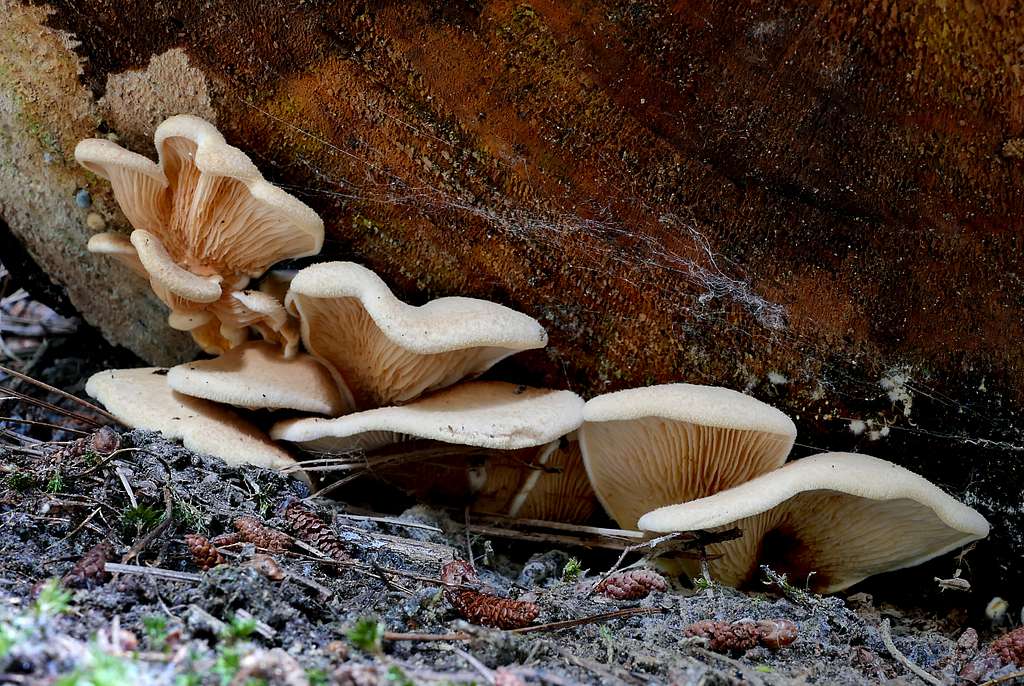
Flavor
The oyster has a more complex flavor when compared to other mushrooms. It has a hint of seafood flavor mixed with anise.
Cooking tips
They are great to use in stroganoff, soup, and risotto. Oyster mushrooms readily absorb flavors, so season them with herbs, garlic, shallots, or your favorite spices to enhance the taste. Consider adding a splash of soy sauce or balsamic vinegar for extra depth.
I recommend the following recipe:
5. Lobster Mushroom (Hypomyces Species)
First, this is not a mushroom. It is a parasitic fungus that grows on mushrooms. Once infected, their exterior turns an orange-red color, resembling the shell of a lobster. This parasite most commonly attacks milkcap mushrooms.
When to forage for lobster mushrooms?
In Maine, the prime foraging season for lobster mushrooms is usually from late July through September.
Where to find them?
Look for lobster mushrooms in mixed woods, especially in areas where you find their host mushrooms (Russula or Lactarius species). It grows most often under hemlock trees.
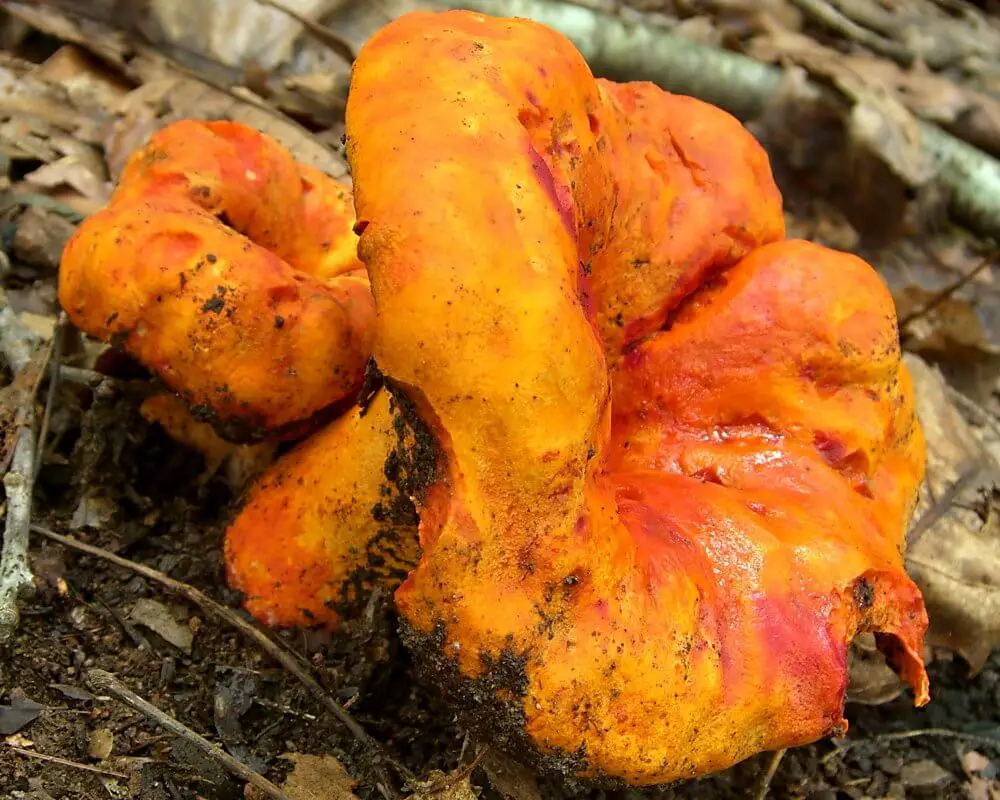
Flavor
After infection, the host mushrooms take on a nutty, sweet flavor that some foragers compare to lobster.
Cooking tips
If you have an iodine intolerance, the lobster mushroom might cause a sickness similar to an allergic reaction.
A few ways to eat this mushroom include bisque, tacos, and, of course, a lobster mushroom roll.
I recommend the following recipe:
6. Shaggy Mane (Coprinus Species)
Shaggy manes have a cylinder-shaped cap covered in scales. It has free gills and white flesh. The cap covers most of the stem and is primarily white, but the scales are light brown at the apex.
When to forage for shaggy manes?
They appear in mid-summer until mid-fall.
They will self-destruct if you don’t get to them quickly enough. When the gills start to turn black, the mushroom begins to digest itself and release black “ink.”
Where to find them?
Look for shaggy manes in grassy areas, lawns, or meadows. They are commonly found near decaying organic matter, such as old tree stumps or rotting wood.
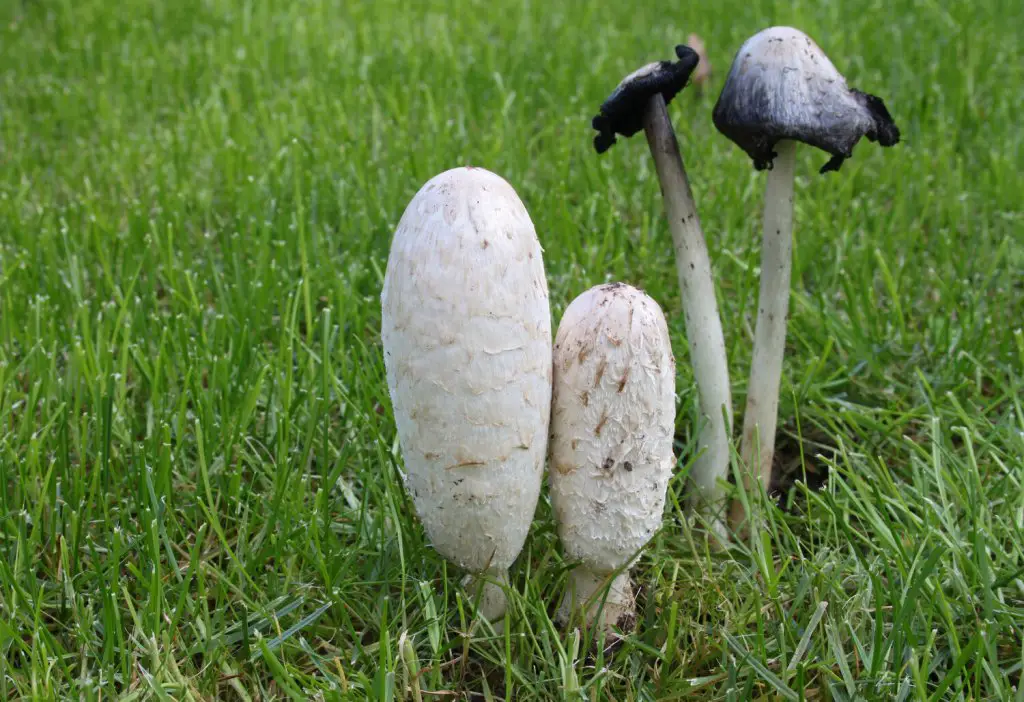
Flavor
The mushroom has a mild earthy flavor and a buttery texture when the gills are white or pink. The taste could easily be lost in a dish with many bold flavors.
Cooking tips
Use shaggy manes soon after harvesting, as they have a short shelf life. Using shaggy mane mushrooms in pasta, casserole, or savory mushroom waffles is best.
I recommend the following recipe:
7. Porcini (Boletus Species)
Porcini means “piglet” in Italian, but that has nothing to do with the appearance or flavor of this mushroom. The brown cap grows between three and 12 inches wide and feels slightly sticky. The stem is very thick compared to the size of the cap.
When to forage for porcinis?
The best time to harvest them is between August and October.
Where to find them?
This is a mycorrhizal fungus and grows in deciduous and coniferous forests, mainly near pine, hemlock, chestnut, fir or spruce trees.
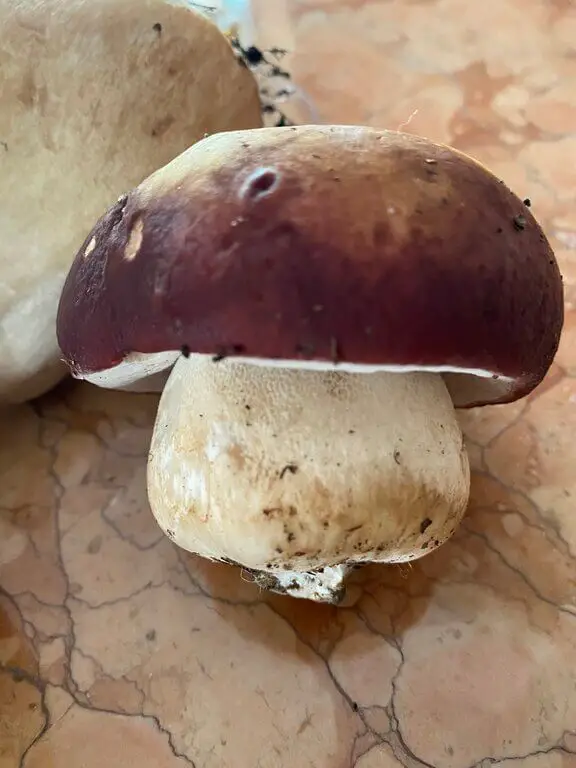
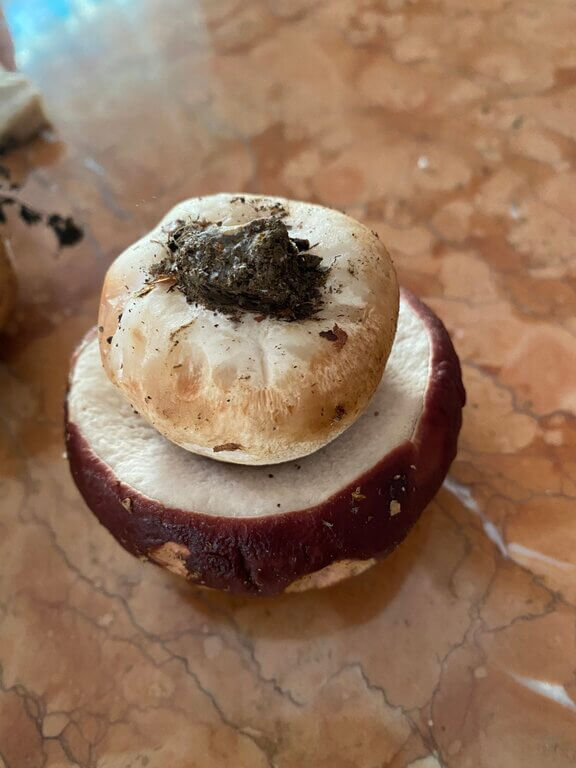
Flavor
Porcini have a robust and intense flavor. They are earthy and slightly nutty with a meaty texture.
Cooking tips
They can be used in many different dishes, and their flavor usually won’t be overpowered by other ingredients. Many people use them as a pizza topping, with steaks, or to make a pâté.
I recommend the following recipe:
- Pressure cooker porcini mushroom pate’
- Fettuccine with porcini mushrooms
- Chicken with porcini and chestnut mushrooms
Watch our video on how to find, and identify king boletes (Boletus edulis)!
8. Pine Mushroom/Matsutake (Tricholoma Species)
It is considered an honor to receive this mushroom as a gift in Japan. It is a firm mushroom with white flesh. The cap is white with tan markings and between 2 and 8 inches wide.
When to forage for pine mushrooms?
Keep an eye out for them from August to October.
Where to find them?
Matsutake mushrooms have a mycorrhizal association with coniferous trees, particularly pine trees. Look for them in areas where pine trees are prevalent.
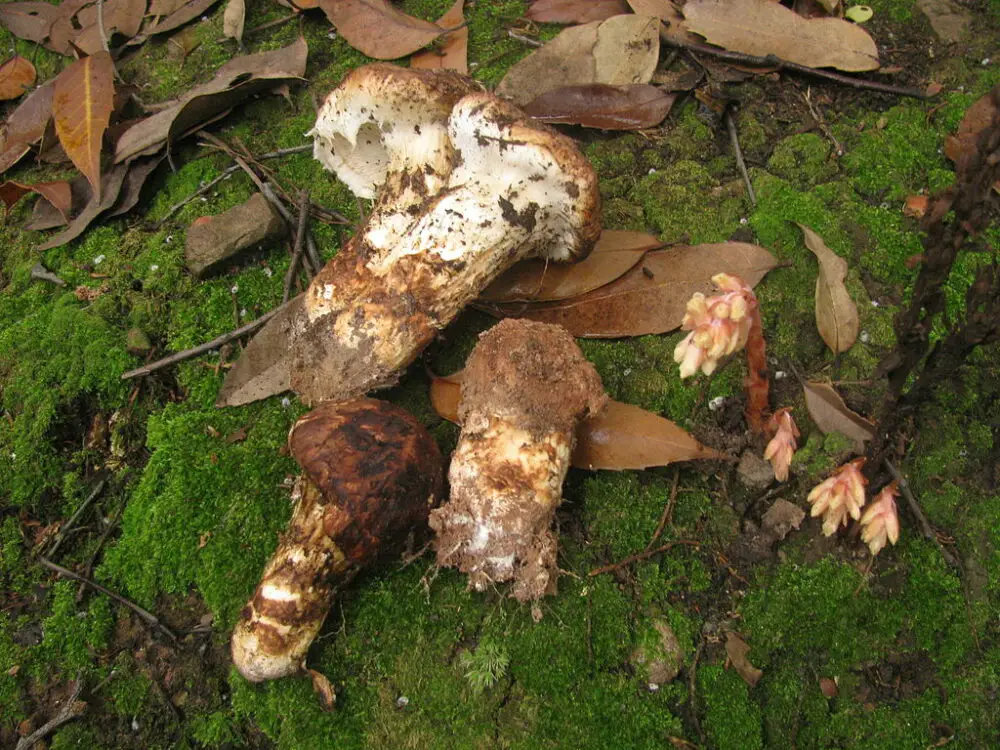
Flavor
This mushroom smells slightly pungent but with hints of cinnamon or pine. When they are cooked, the texture is crunchy, and they add a spicy element to a dish.
Cooking tips
Simple dishes will allow their flavors to shine through. Matsutake is commonly used in clear soups, adding a rich, earthy flavor. Consider making a simple broth with dashi, soy sauce, and mirin, and add sliced matsutake mushrooms.
Matsutake mushrooms can be lightly coated in tempura batter and deep-fried. In some cases, matsutake mushrooms are sliced thinly and eaten raw.
I recommend the following recipe:
9. Hen of the Woods (Grifola Species)
Also known as maitake, this edible and medicinal mushroom is popular in Japan but is commonly found in Maine around labor day. It grows in clusters and has gray-brown color with flattened caps, resembling the feathers of a sitting hen.
When to forage for hen of the woods?
You can find hens of the woods in September and November
Where to find them?
Hen of the woods mushrooms have a symbiotic relationship with hardwood trees, particularly oaks. Once you find one, you should continue returning to that area, as they will likely continue growing there each season.
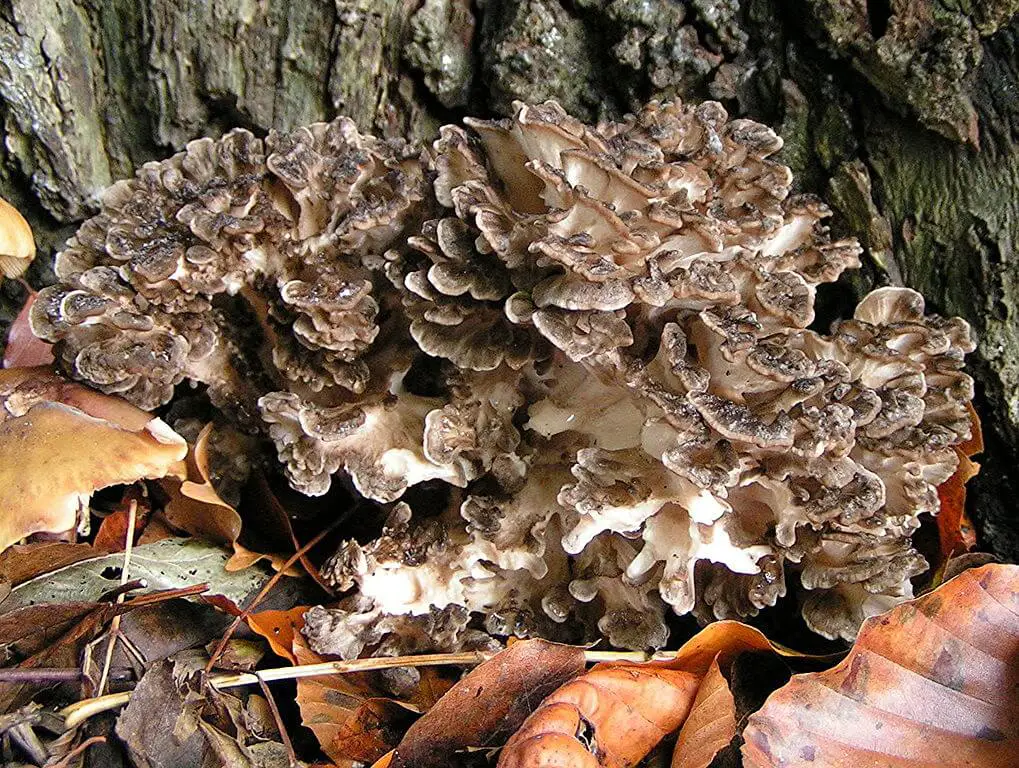
Flavor
These mushrooms smell musky and earthy. When cooked, they have a typical earthy mushroom flavor with a hint of pepper. The texture is slightly crunchy.
Cooking tips
There are many ways to eat this mushroom. You can fry or sauté them or use them in recipes such as ramen, vegan steak, or pasta.
I recommend the following recipe:
*When mushroom hunting in Maine, it is also possible to find morels, but they are not as common as other mushrooms.
Poisonous Mushrooms in Maine
1. Eastern Jack O’Lantern (Omphalotus Species)
This mushroom looks like a chanterelle to the untrained eye. The orange color of the jack o’lantern mushroom is brighter and supposedly glows in the dark. This species also has no distinctive scent.
Another significant difference is that jack o’lanterns grow on decaying wood. Luckily, if you ingest these mushrooms, they will not cause death, but you will experience vomiting, diarrhea, and gastrointestinal upset.
2. Eastern Destroying Angel (Amanita Species)
The destroying angel is a white mushroom whose cap can be up to 4 inches wide. The stem can grow up to 5 and a 1/2 inches tall. Most notably, the gills don’t attach to the stem, and there is a small skirt-like ring under the cap.
You can find it in cultivated landscapes near oak and hardwood forests. As the name suggests, it is deadly. The initial symptoms are similar to cholera and begin approximately 15 hours after ingestion. Liver and kidney damage eventually lead to death.
3. Pigskin Poison Puffball (Scleroderma Species)
This mushroom is actually an earthball, not a puffball, as its common name suggests. It looks similar to a common puffball but is very firm to the touch.
Pigskin puffball grows near trees and on wood debris. If you consume it, it will not kill you, but it will cause severe gastrointestinal discomfort.
4. False King bolete (Boletus huronensis)
Boletus huronensis looks very similar to the delicious King Bolete mushroom. B. huronensis has pale yellow flesh that turns blue when bruised and no veining on the stalk.
This mushroom grows near hemlock in Maine. Aside from nausea, diarrhea, and stomach pain, ingesting this mushroom also causes intense weakness.
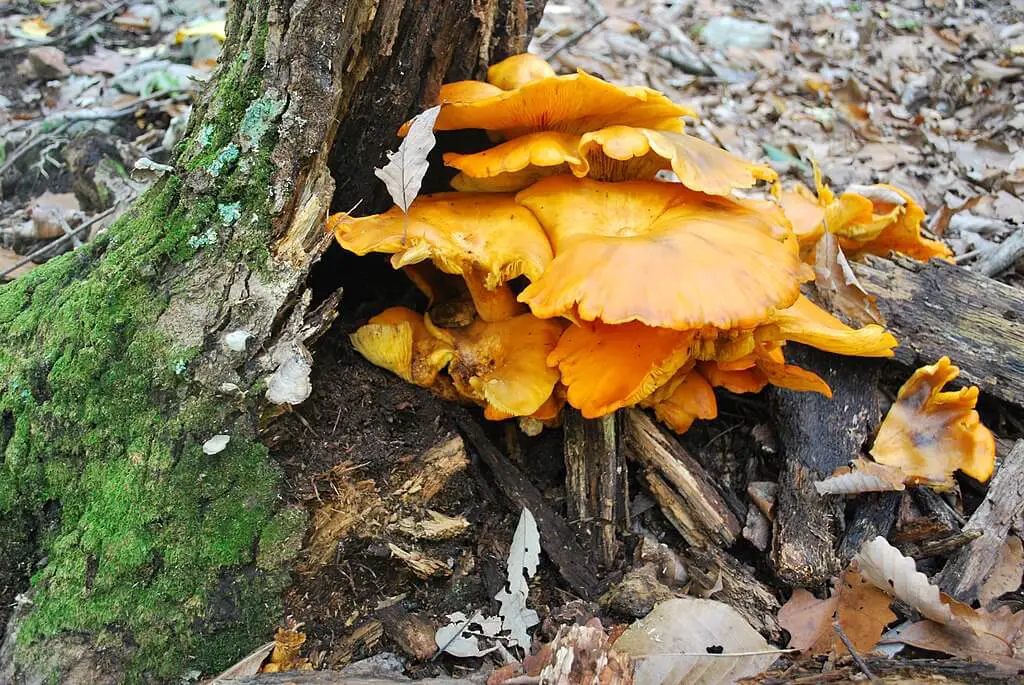
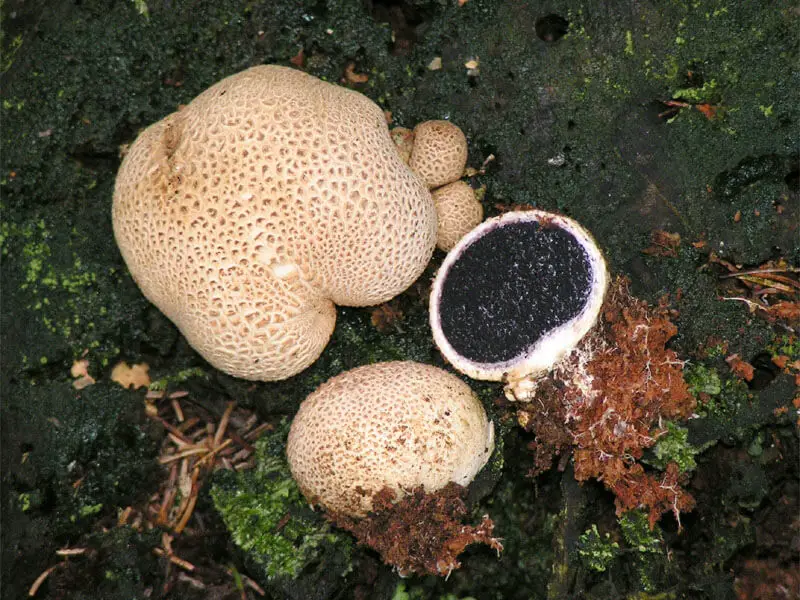
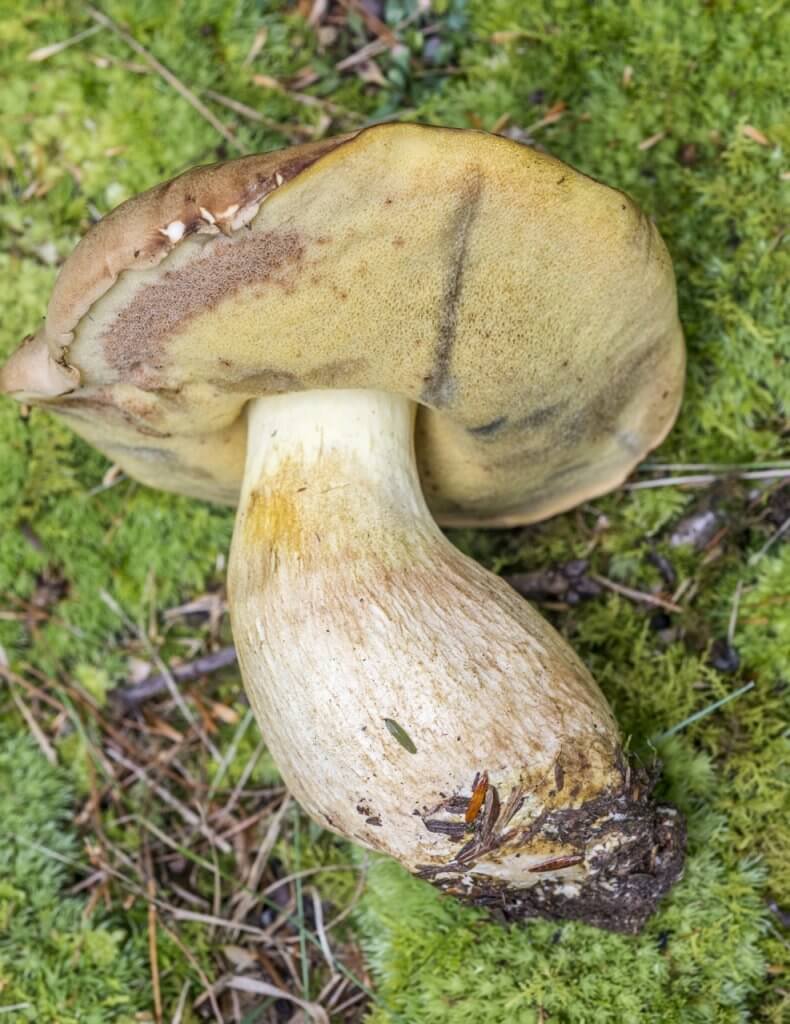
Check our video on the 7 most poisonous mushrooms growing in the US (mushroom details and ingestion symptoms included)!
Practical Tips to Keep in Mind as You Forage
Whether you are a first-time forager or a veteran, mushroom identification and general conservation are crucial.
To avoid collecting a dangerous look-alike, learn to make a spore print before your first adventure.
Other than that, here are a few other things to remember:
- Always know where you are going and precisely what you are looking for.
- Forage mushrooms from clean, unpolluted areas.
- Cut mushrooms from the base. Pulling them from the ground can damage the mycelium.
- Know which species you can eat raw and which you can’t. If you are unsure, cook it.
- Bring a field guide, mushroom foraging tools and download a mushroom identification app.
- Harvest conservatively.
- Leave nature equally as clean or cleaner than you found it.
- Check local laws. Some areas are off-limits, and others require permits.
New England is a haven for mushroom foraging. Maine has become so famous as a mushroom haven that there’s even a fungi festival in Portland each year.
During the pandemic, the number of members of the Maine mycological association tripled, now hosting approximately 300 foragers.
If you are interested in learning more about foraging, and mushrooms, the association hosts meetings, guest speakers, and field trips.
Also, check our guides on mushroom hunting in:
Originally from Florida, but with a lust for travel, Sami has found herself in many remote areas with little-to-no access to traditional medicines. Since 2014, she has been experimenting with natural remedies, eastern medicine, and foraging. She believes that the Earth provides us with everything we need to live, heal, and cure.

